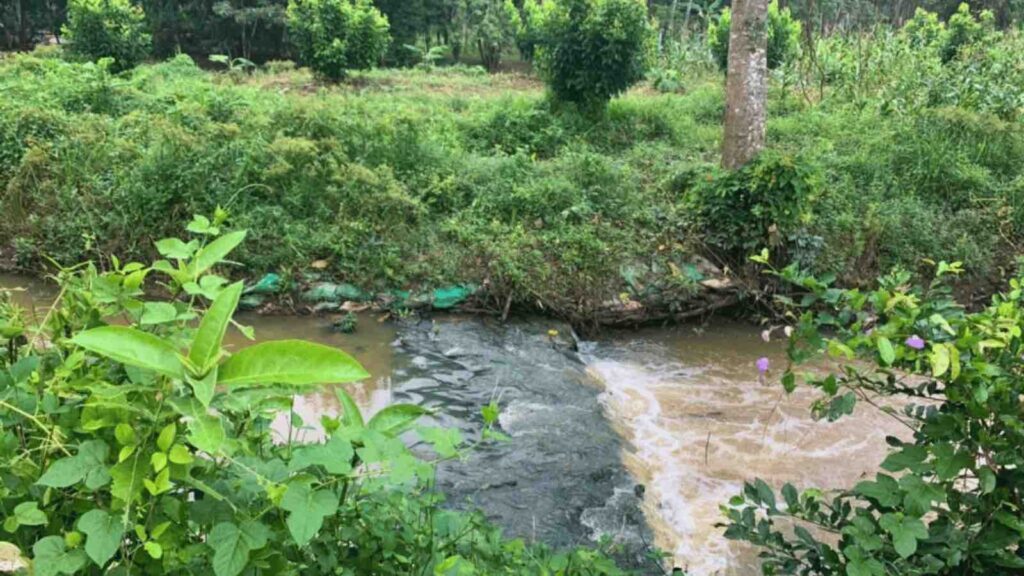In the provinces of Songkhla and Nakhon Si Thammarat – Thailand, community-led groups have built living weirs along local rivers. This initiative has improved water retention during dry seasons and mitigated flood risks.
Bangkok, Thailand – In the verdant landscapes of Thailand, where rice paddies stretch far and wide, water is the lifeblood of a nation. But the relentless march of climate change, bringing with it severe floods and crippling droughts, has placed this precious resource under siege. Enter nature-based water management, Thailand’s innovative response to an escalating environmental predicament.
A groundbreaking report, involving researchers from five Thai universities, shines a light on two pioneering nature-based approaches to water management. This marks a significant shift from Thailand’s traditional reliance on large-scale, engineered solutions to a more grassroots, ecosystem-centered approach. The findings? A mixed bag of promising environmental benefits and complex challenges.
As Thailand grapples with the harsh realities of a changing climate, its reliance on irrigated agriculture, particularly rice farming, has never been more tested. The Global Climate Risk Index places Thailand among the top 10 nations most vulnerable to climate impacts. In response, the nation is exploring nature-based solutions – a strategy that harnesses the natural processes of rivers, floodplains, and watershed forests. The adoption of such solutions aligns with global movements to address climate change while fortifying biodiversity, ecosystems, and communities.
RELEVANT SUSTAINABLE GOALS


Living Weirs: A Community-driven Success
In the provinces of Songkhla and Nakhon Si Thammarat, community-led groups have built living weirs along local rivers. This initiative, sparked by severe droughts, saw the construction of low dams using natural materials, supplemented by tree and vegetation planting. These weirs have improved water retention during dry seasons and mitigated flood risks, bringing tangible benefits to local agriculture and community life.
In southern Thailand, five pioneering ‘living weirs’ have been constructed across two pilot sites. These weirs, built with a bamboo grid across rivers and filled with natural materials, are designed for ecological harmony. Trees and plants along riverbanks help stabilize the structure and grow through the grid. This innovative approach aids in water retention during the dry season and effectively moderates stream flow during the rainy season.”
Floodplain Management with Nature-based Solutions
In both the living weirs and floodplain projects, researchers observed significant benefits for hydrological systems and the surrounding environment. Key findings include increased soil moisture, enhanced groundwater recharge, and a reduction in flood risks during heavy rainfall.
For the living weirs, data between 2015 and 2021 showed a marked improvement in community resilience: around 55% of households reported not being affected by flooding, up from 40%. Additionally, households experiencing no drought periods increased from 70% to 85%. Despite these promising results, varying rainfall patterns across wet and dry seasons within this period suggest a need for longer-term studies to fully gauge the weirs’ effectiveness in flood and drought mitigation.
Regarding floodplains, approximately 70% of surveyed respondents acknowledged the ecosystem-based adaptation (EbA) intervention’s positive impact on the local economy, while 34% noted a reduced risk of disaster.
While living weirs showed an increase in biodiversity, providing new habitats for fish, insects, and molluscs, researchers noted some habitat fragmentation in natural and semi-natural floodplains. The Bang Rakam district study, for instance, highlighted unintended social and ecological consequences due to the disconnection of the floodplain from natural flood pulses, caused by a flood-detention system that diverts floodwater away from certain areas.
Lead image courtesy of GIZ Thailand; A living weir in southern Thailand.
You may also be interested in :
The Hidden Cost Of Climate Change : A $16 Million Per Hour Global Price tags, Study


